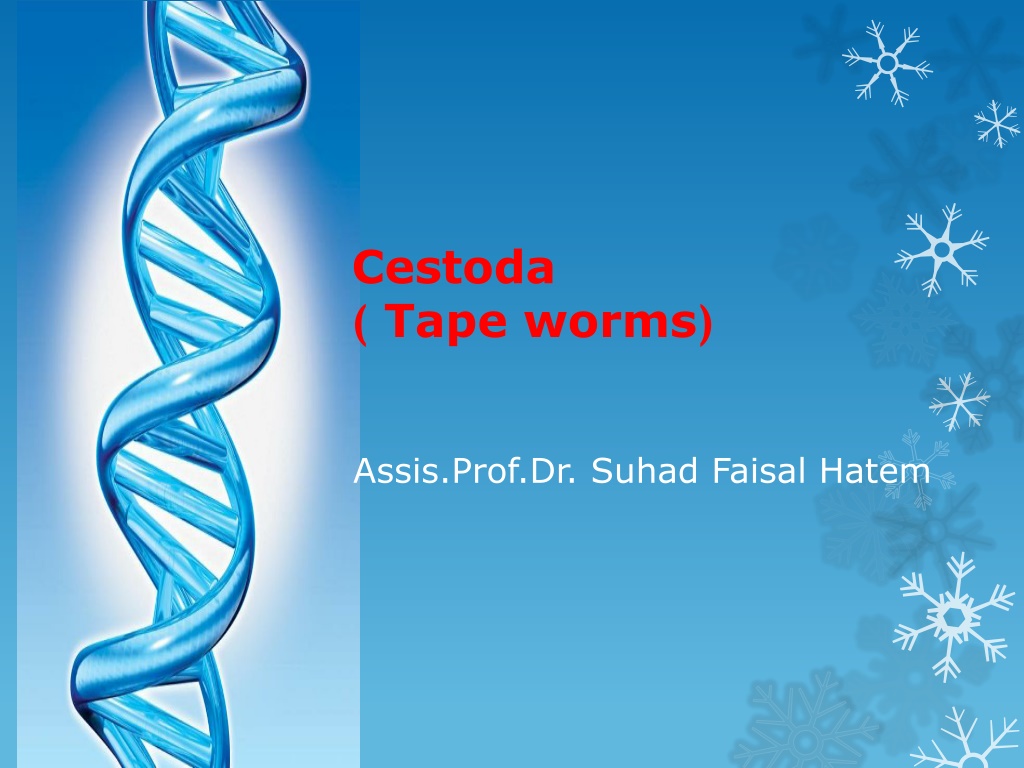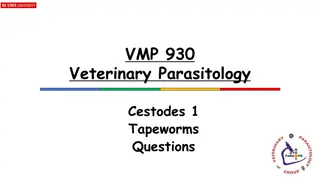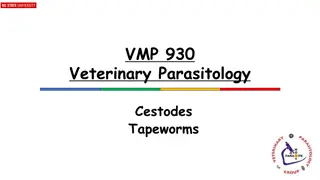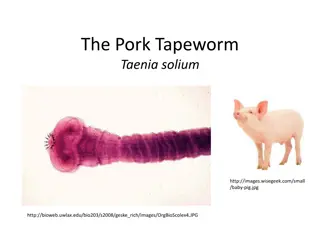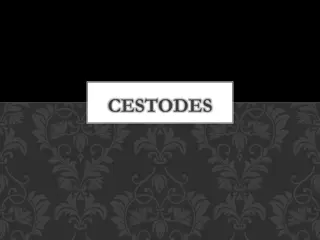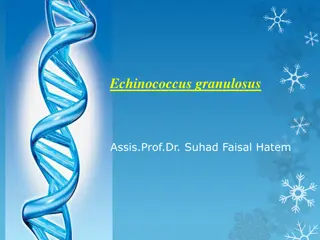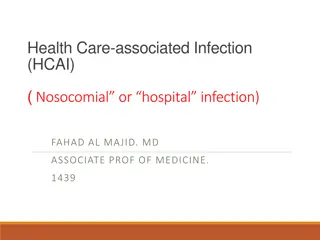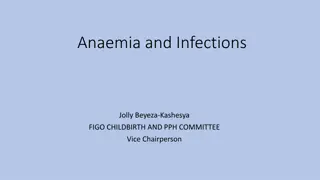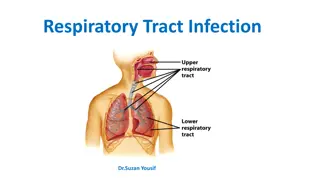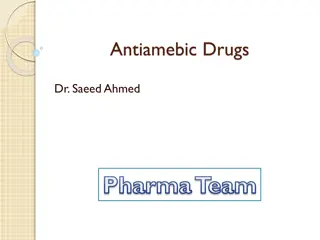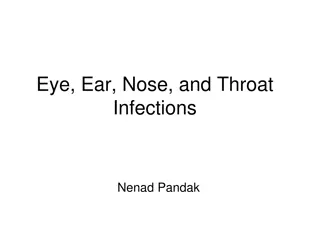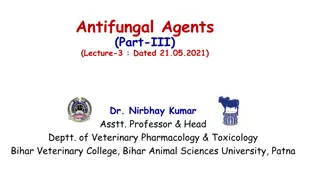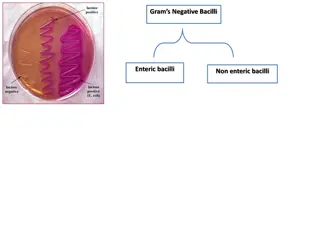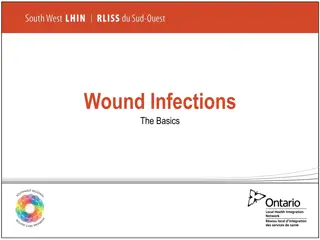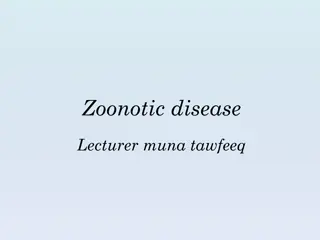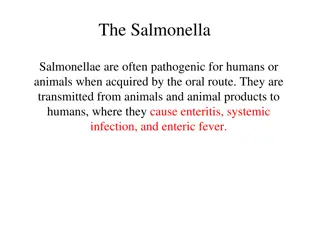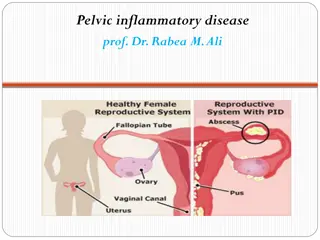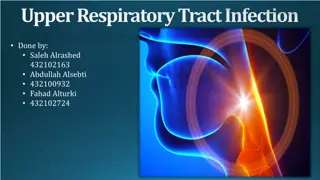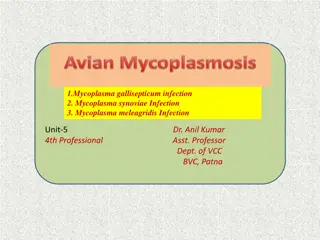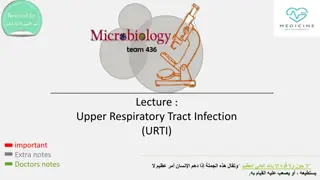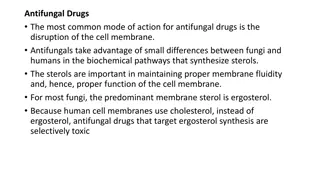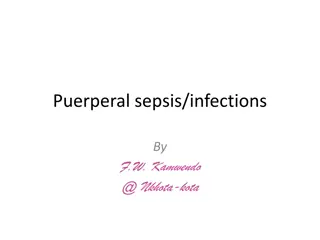Understanding Tapeworm Infections and Their Impact on Human Health
Tapeworms, particularly Taenia solium and Taenia saginata, are medically important cestodes that cause parasitic infections in humans. These flat, segmented worms attach to the intestinal wall and rely on intermediate hosts like cows and pigs to complete their life cycle. Infestations can lead to digestive issues, weight loss, and other symptoms. Laboratory diagnosis involves examining stool samples for the presence of tapeworm eggs. Understanding tapeworm morphology, life cycles, and symptoms is crucial in managing and preventing these infections.
Download Presentation

Please find below an Image/Link to download the presentation.
The content on the website is provided AS IS for your information and personal use only. It may not be sold, licensed, or shared on other websites without obtaining consent from the author. Download presentation by click this link. If you encounter any issues during the download, it is possible that the publisher has removed the file from their server.
E N D
Presentation Transcript
Cestoda ) Tape worms( Assis.Prof.Dr. Suhad Faisal Hatem
Cestoda (Tape worms) There are four medically important cestodes: Taenia solium, Taenia saginata, Diphyllobothrium latum, and Echinococcus granulosus .Human taeniasis is a parasitic infection caused by three tapeworm species, T. saginata (known as the beef tapeworm), T. solium (pork tapeworm). Humans are the only hosts for these Taenia tapeworms. Cows and pigs become infected after feeding in areas that are contaminated with Taenia eggs from human feces.
Morphology 1-Tapeworms have flat, segmented bodies, consisting of a head, known as the scolex, neck and a series of segments known as proglottids or strobila. 2-scolex: Is the organ of attachment and provided with 4 suckers. Rostellum and hooks may be present in some species to dig into the mucosa. 3-proglottids: consists of immature, mature and gravid segments. 4-A tapeworm: attaches to the intestinal wall with its head, scolex. Depending on the tapeworm species the scolex usually has a set of hooks and four suckers. Hooks dig into the mucosa. 5-Cestodes are hermaphroditic worms, each mature segment possesses both male and female sex organs. Tapeworms lack body cavity or digestive system. Adult worms inhabit the small intestine of the definitive host. They need intermediate host. 6-Segments absorb nutrients through their skin and have the ability to produce eggs. Over time the segments fill with eggs and detach from the tail. They are then carried out of the body in the feces
The major differences between T. solium and T. saginata is summarized in the table: Taenia Solium Taenia saginata Taenia_egg Scolex of Taenia solium Scolex of Taenia Saginata Gravid proglotids of T solium Gravid proglottids of T. saginata
Taenia saginata (beef tapeworm) and T. solium (pork tapeworm) life cycle
Pathogensis &Symptoms Most people with tapeworm infections have no symptoms or mild symptoms. Patients with T. saginata often experience more symptoms that those with T. solium because the T. saginata tapeworm is larger in size (up to 10 meters (m)) than T. solium (usually 3 m). Tapeworms can cause digestive problems including abdominal pain, loss of appetite, weight loss, and upset stomach. The most visible symptom of taeniasis is the active passing of proglottids (tapeworm segments) through the anus and in the feces. In rare cases, tapeworm segments become lodged in the appendix, or the bile and pancreatic ducts. Infection with T. solium tapeworms can result in human cysticercosis, which can be a very serious disease that can cause seizures and muscle or eye damage.
Laboratory Diagnosis 1-Diagnosis of Taenia tapeworm infections is made by examination of stool samples using a microscope. 2-Since it is difficult to diagnose using eggs alone, looking at the scolex or the gravid proglottids can help identify it as Taenia saginata. Proglottids sometimes are visible with unaided eye, so can aid with identification. Observation of scolex help distinguish between T. saginata, T. solium. When the uterus is injected with India ink, its branches become visible. Counting the uterine identification (T. saginata uteri have 12 or more branches on each side, while other species such as T. solium only have five to 10. branches enables some 3-Eosinophilia and elevated IgE levels are chief hematological findings. 4- Ziehl Neelsen stain can be used to differentiate between mature T. saginata and T. solium, in most cases T. saginata will stain while T. solium will not, but the method is not strictly reliable. Treatment: praziquantel or niclosamide
